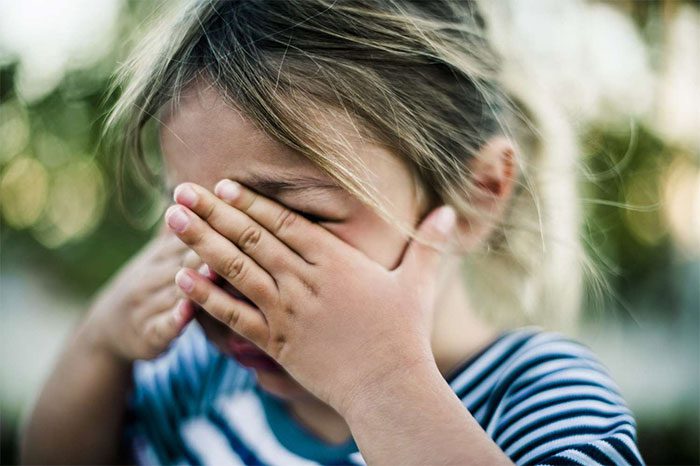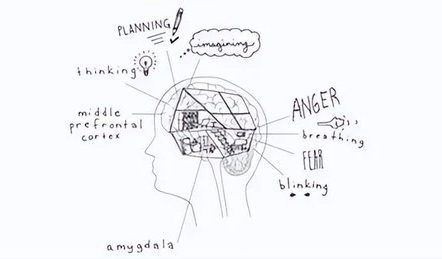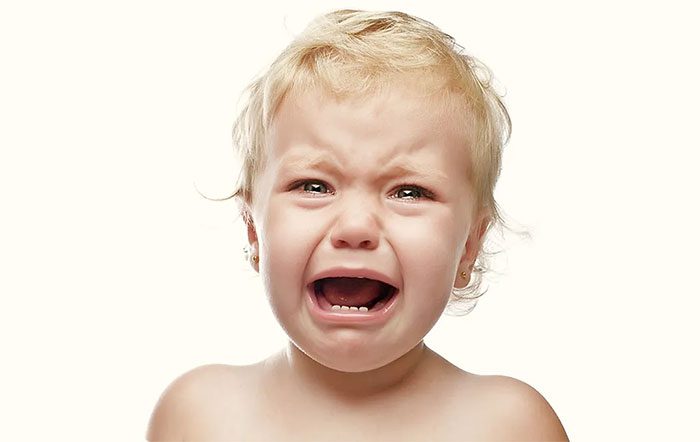One weekend, a family took their son to play soccer. On the field, a few children were happily playing while the parents chatted comfortably outside.
For some reason, a conflict broke out among the children, even escalating to physical confrontation. One boy ran to his parents, tears streaming down his face: “Dad, the other kids are bullying me.”
The father calmly replied: “Why are you crying? Tell me what happened!”
Crying is the most common behavior in children’s development and also the one that causes the most distress for parents. Faced with their child’s tears, parents react in various ways:
Scolding: What are you crying about? Is crying going to solve the problem?
Disregarding: You’re a boy; if you cry, people will laugh at you.
Comforting: Alright, stop crying, and I’ll buy you something nice to eat.
In reality, whether comforting, strictly preventing, or blaming and criticizing, they all share the common view that crying is not good and should be stopped.
Very few parents believe that crying is a normal emotion. And very few children are allowed to cry when happy, sad, or joyful. As parents, we should calmly recognize and understand our children’s cries, exploring the truth behind their tears.

Very few children are allowed to cry when happy, sad, or joyful. (Illustrative image).
Crying is a Normal Emotional Expression in Children
The U.S. Brain Science Agency and renowned child development expert Daniel Siegel suggest that a child’s brain resembles a two-story building under construction.
The lower brain is responsible for maintaining survival and self-protection, a function established at birth. Meanwhile, the upper brain is responsible for thinking, planning, and imagining.
So, when a child faces difficulties, fear, or despair, the amygdala in the lower brain responsible for emotions reacts with stress, often resulting in resistance and crying. Crying is a reasonable physiological response in children and a normal emotional expression.
When a child is small, they can’t express complex emotions. Thus, they can only cry when facing issues like hunger, sleepiness, or needing to be held by their parents.
As children grow older, they develop richer thoughts. At this point, they cry when they encounter life issues such as being bullied, not receiving help, or feeling lonely. Children use crying to express their feelings, seek help, and release negative emotions inside.
After crying, children can lighten their emotional burdens and move on peacefully.

At this point, children cry when facing life issues…
Psychologist Kepier conducted a survey on tears, dividing 137 participants into healthy and sick groups. Most individuals in the sick group suffered from conditions closely related to mental stress, such as ulcers and colitis.
The results indicated that those in the healthy group tended to cry more than those who were ill. They reported that after crying, they felt significantly better. Moreover, in some respects, a child crying in front of us is a sign of trust towards the other person.
Children are only willing to reveal their most vulnerable and genuine aspects to those they trust and feel close to. At this time, parents should kneel down, wipe their child’s tears, and talk to them.
Children Who Cry Often vs. Those Who Rarely Cry: A Significant Gap
1. Different Emotional Perception Abilities
There is a psychological effect known as the “pendulum effect.” This means that positive and negative emotions are symmetrical, much like a pendulum. Simply put, you can experience plenty of happiness but also feel sadness.
Observing those around us, it’s not hard to notice that extroverted people tend to express their feelings openly. They can joyfully display their emotions and quickly shed tears when necessary.
Thus, children who cry often from a young age can freely express their emotions, needs, and live a free and comfortable life. In contrast, children who hesitate to cry tend to be shy, introverted, and always conceal their true feelings. Naturally, these children struggle to find genuine moments of joy in their lives.

Children who cry often can freely express their emotions and live a free and comfortable life.
2. Different Empathy Abilities
There was a man with a very good character who could sense others’ feelings anywhere and at any time, grasping their needs and offering comfort and encouragement.
When he saw someone thirsty, he would offer them a bottle of water. When they were upset, he would change the subject. When they were confused, he would help them resolve the problem.
It wasn’t until later that he shared his upbringing experience. He considered himself a crybaby as a child but was fortunate to have loving and indulgent parents who allowed him to cry based on his emotions.
As a result, children who cry often in their early years tend to have a more sensitive emotional perception and greater empathy and compassion. Conversely, children who suppress their tears often remain indifferent to the feelings of others. As they grow up, they usually have few close friends and feel a constant sense of loneliness and emptiness.
3. Different Psychological Defense Mechanisms
Psychologist William Fry once conducted a fascinating experiment.
He divided all participants into two groups: one group watched a very emotional movie, while the other group stayed in a room and cut onions to induce tears. The staff then collected their tears for comparative research.
The research results indicated that emotional tears contain catecholamine, while reflex tears do not. Catecholamine is a substance released by the brain when under stress.
This experiment also demonstrated that when a person is stressed and cannot release their emotions, catecholamine continues to accumulate in the body, increasing the risk of illness.
Thus, children who cry often as they grow up tend to have cheerful personalities and better psychological adjustment mechanisms in the face of difficulties. These children will lead peaceful, happy lives.
On the other hand, children who suppress their emotions, unable to cry in front of others, often hide behind a solid wall, facing negative emotions in despair alone. Therefore, they are more likely to collapse and be hurt when facing crises.

Children who suppress their emotions often collapse and get hurt during crises.
When a Child Cries, It’s Better to Let It Be Than to Stop It
When a child cries, it means they have unresolved feelings inside. What parents need to do is help the child resolve these feelings rather than prevent them from crying.
Hollywood star Justin Baldoni once shared a short story about himself and his daughter.
One time, while shopping at a mall, his daughter, for some unknown reason, lay on the floor and cried. Such scenes are familiar to many parents. If a child’s needs are unmet, they will cry to express their dissatisfaction. At this point, parents can either compromise or reprimand sternly.
Justin allowed his daughter to cry freely before discussing the issue with her. He believed that a child crying is part of learning how to face their emotions.
Justin shared: “Adults can calmly face their emotions, allowing themselves the patience to digest all negativity. We can learn to relax more, to cry and laugh, to joyfully accept everything that doesn’t go our way. What the world needs is a little more understanding and a little less confrontation.”
A child’s crying is often a test for parents. If they see that their parents are loving and accommodating, they will stop crying immediately. Once the emotions stabilize, parents should face the issue with the child and help them untie the emotional knots within. When a child feels respected by their parents and listened to, they are more willing to share difficult thoughts.
During the crying process, children will also learn to distinguish right from wrong to mature. Crying is a self-protective mechanism in a child’s subconscious and the truest expression of their emotions. Every emotion a child experiences deserves respect and permission.
Throughout life, each of us will encounter many people during happy, smiling moments. However, few will genuinely accept us when we cry.





















































